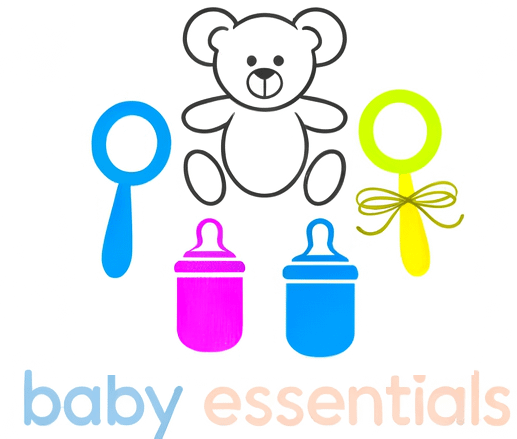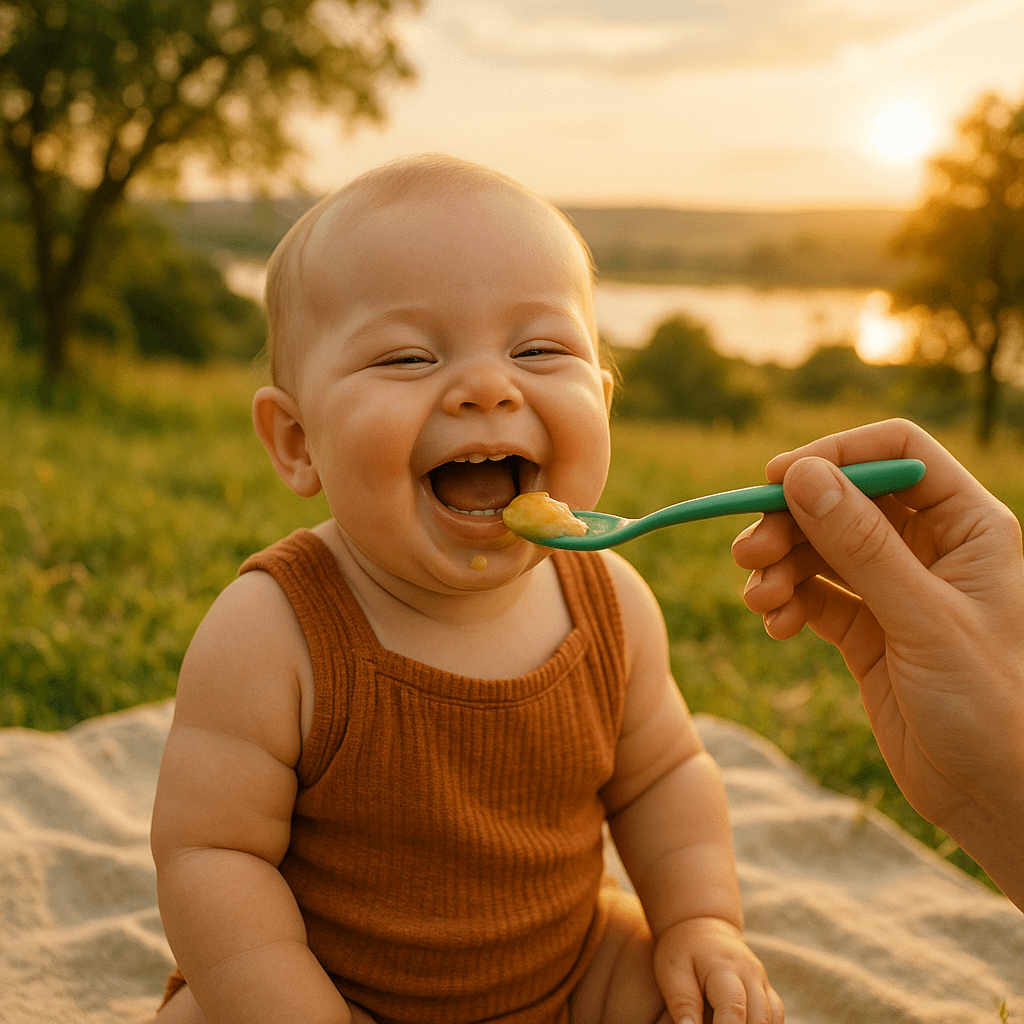Introduction to Parents Travel Guide – Safe Feeding for Babies
Embarking on an adventure with your little one is incredibly exciting, but for many new parents, the thought of feeding on the go can bring a wave of anxiety. From maintaining hygiene standards to managing different feeding methods, travelling with a baby presents unique challenges. This comprehensive guide, tailored for UK parents in 2025, will equip you with all the up-to-date knowledge and practical tips you need to ensure safe, happy, and stress-free mealtimes, no matter where your family adventures take you. Say goodbye to feeding worries and hello to memorable journeys!
The Importance of Safe Feeding Practices While Travelling
Your baby’s immune system is still developing, making them more vulnerable to infections. When you’re away from the familiar comforts of home, maintaining strict hygiene and adhering to safe feeding practices becomes even more critical. Contaminated food or improperly prepared feeds can lead to upset tummies, dehydration, and potentially more serious illnesses, turning your dream trip into a nightmare. This guide will focus on how to minimise these risks, allowing you to relax and enjoy your family time.
Breastfeeding on the Go: The Ultimate Travel Companion
For many parents, breastfeeding offers the most convenient and arguably safest feeding option while travelling. It’s always readily available, at the right temperature, and requires no special equipment or sterilisation.
The Convenience of Breastfeeding
- Always Ready: No need to pack bottles, formula, or worry about water quality. Your milk is perfectly formulated for your baby’s needs, whenever and wherever they need it.
- Immune Boost: Breast milk provides antibodies that help protect your baby from common travel bugs, offering an extra layer of defence against new environments.
- Comfort and Soothe: Feeding can be a wonderful way to comfort your baby during unsettling moments, such as takeoff and landing on a flight, or when dealing with unfamiliar surroundings and noises. The act of sucking can also help equalise pressure in their ears during flights.
Practical Tips for Breastfeeding While Travelling
- Comfort is Key: Wear comfortable, loose-fitting clothing that allows for easy access. Layers can be particularly useful for adapting to varying temperatures.
- Privacy, If Desired: While public breastfeeding is protected by The Equality Act 2010 in the UK (meaning it’s illegal for anyone to ask you to stop or leave a public place), some parents prefer a little more privacy. A nursing cover, muslin cloth, or light blanket can provide this.
- Hydrate Yourself: Breastfeeding in warmer climates or during active travel can increase your fluid needs. Ensure you drink plenty of water to stay hydrated and maintain your milk supply.
- Airport Facilities: Many UK airports offer dedicated feeding areas or family rooms. Check the airport’s website before you travel for information on available facilities.
- Consider a Sling or Carrier: A baby sling or carrier can be incredibly useful for discreet feeding on the go, especially on public transport or when walking around.
Expressing and Storing Breast Milk While Travelling
If you express breast milk, either occasionally or regularly, you’ll need to consider safe storage when travelling.
- Before You Go: Freeze expressed milk in smaller portions if you anticipate needing it for longer journeys or during your stay. Remember, you cannot carry frozen breast milk in hand luggage on a plane, but you can in checked-in luggage. Liquid breast milk can be carried in hand luggage in containers of up to 2 litres, and your baby does not need to be present. Always check with your airline and airport security for their specific guidelines.
- Cool Bags and Ice Packs: For short trips or days out, an insulated cool bag with frozen gel packs is essential for keeping expressed milk cool. Aim to use it within 4 hours if kept in a cool bag with an ice pack.
- Refrigeration: If you have access to a fridge at your accommodation, store expressed milk at the back where it’s coldest, and use within 24 hours of expressing.
- Cleaning Equipment: If you use a breast pump, ensure you have a plan for cleaning and sterilising its parts. Sterilising tablets, portable steam steriliser bags, or a travel steriliser can be invaluable.
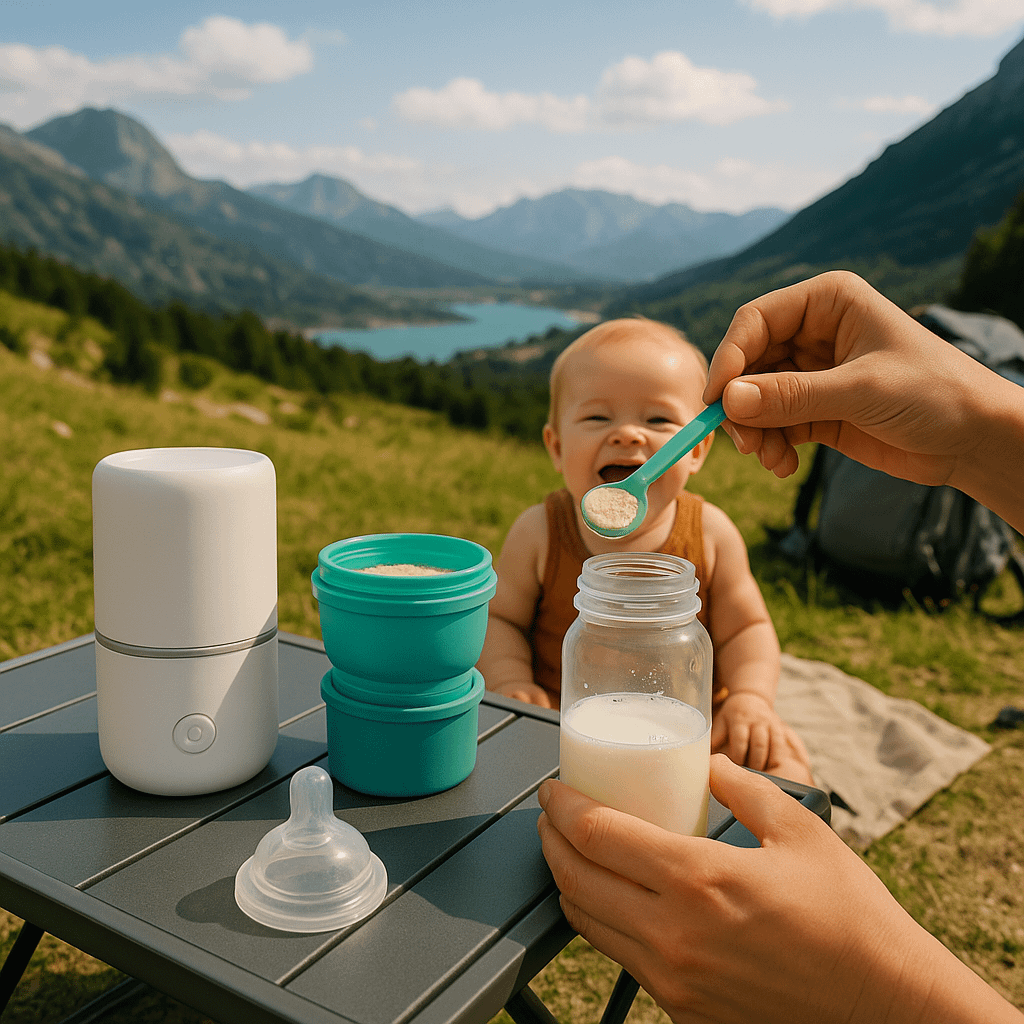
Formula Feeding on the Go: Preparation and Hygiene are Paramount
Formula feeding requires meticulous preparation and strict hygiene to minimise the risk of bacterial contamination. This is even more crucial when away from your usual home setup.
Essential Gear for Formula Feeding Travel
- Pre-measured Formula Pots: These are a game-changer! Measure out individual portions of formula powder into separate, clean, and dry containers. This saves time and ensures accurate measurements on the go.
- Vacuum Flask for Hot Water: A clean vacuum flask, used only for your baby, should be filled with freshly boiled water just before you leave. If the flask is full and sealed, the water will stay above 70°C for several hours, which is crucial for killing bacteria in the formula powder.
- Sterilised Bottles: Always carry enough sterilised bottles for the planned feeds. You can use travel sterilisers (microwave or cold water tablets) at your destination, or ready-to-use sterilised bottles if available.
- Ready-to-Feed Liquid Formula: These pre-sterilised cartons are the most convenient option for travel, as they don’t require boiling water or sterilisation on the spot. They are more expensive but offer unparalleled peace of mind. They can be given at room temperature. Once opened, any unused portion needs to be sealed, refrigerated, and used within 24 hours. If no fridge is available, use within 2 hours.
Making Up Formula Feeds While Travelling (Powder)
The NHS recommends making up a fresh feed only when your baby needs it.
- Hygiene First: Wash your hands thoroughly with soap and water, or use an alcohol-based hand sanitiser if water is unavailable.
- Boil Water (If Not Using Flask): If you’re not using pre-boiled water from a flask, you’ll need access to freshly boiled water. This is where it gets tricky abroad.
- Pour Hot Water: Pour the required amount of hot (above 70°C) water from your vacuum flask into a sterilised bottle.
- Add Formula: Add the pre-measured formula powder to the hot water.
- Shake Well: Put the sterilised teat and cap on the bottle and shake well until the powder is fully dissolved.
- Cool Down: Cool the bottle rapidly under cold running water (with the lid on) until it reaches body temperature. Always test a few drops on the inside of your wrist before offering it to your baby. It should feel lukewarm, not hot.
- Discard Leftovers: Throw away any unused formula milk after a feed. Never save and reheat leftovers.
Water Safety Abroad for Formula Feeding
This is a critical consideration when travelling internationally.
- Bottled Water: Bottled water is often suggested as an alternative to tap water abroad, but it’s crucial to understand that it’s not usually sterile and may contain too much salt (sodium) or sulphate for infants.
- Check Labels: If using bottled water, choose still (not sparkling) water. Crucially, check the label to ensure:
- The sodium (Na) level is no higher than 200 mg per litre.
- The sulphate (SO or SO4) level is less than 250 mg per litre.
- Still Boil: Even if suitable, bottled water must still be boiled and cooled to above 70°C before mixing with formula powder to ensure sterilisation. Never re-boil bottled water, as this can concentrate mineral levels.
- Seal Intact: Always check that the seal on the bottled water is intact before opening.
- Check Labels: If using bottled water, choose still (not sparkling) water. Crucially, check the label to ensure:
- Avoid Tap Water (Unless Verified Safe): Unless you are absolutely certain of the local tap water quality (e.g., in highly developed countries with stringent water treatment), it’s best to avoid using it for formula preparation. In many places, tap water may contain bacteria or parasites that can be harmful to your baby.
- Consider Sterilising Tablets: If boiling water is not feasible, sterilising tablets that dissolve in cold water can be a lifesaver for sterilising bottles and equipment, particularly when camping or in remote locations.
Storing Prepared Formula (If Absolutely Necessary)
While making feeds fresh is always best, sometimes it’s unavoidable to pre-prepare.
- Cool Quickly: If you prepare a feed at home, cool it rapidly under cold running water or in a bowl of cold water, then immediately place it in the back of the fridge.
- Transportation: Take it out of the fridge just before you leave and transport it in a cool bag with an ice pack.
- Usage Times:
- In a fridge: Use within 24 hours.
- In a cool bag with an ice pack: Use within 4 hours.
- At room temperature: Use within 2 hours. The longer the prepared formula is stored, even in cold conditions, the greater the risk of bacterial growth.
Weaning on the Move: Introducing Solids Safely
Once your baby starts solids around 6 months, feeding while travelling takes on new considerations. The key here is convenience, safety, and maintaining familiar flavours where possible.
Choosing Travel-Friendly Baby Foods
- Shop-Bought Pouches and Jars: These are incredibly convenient. They are pre-sterilised, shelf-stable, and come in single-serving portions. Opt for brands your baby is already familiar with to avoid tummy upsets or fussiness.
- Home-Cooked & Transported: If you prefer homemade baby food, cool it quickly (within 1-2 hours) after cooking and store it in airtight containers. For travel, transport in a cool bag with ice packs.
- Usage: Homemade food kept in the fridge should be used within 2 days. If transporting in a cool bag, use within 4 hours.
- Finger Foods: For older babies, well-chosen finger foods are excellent for travel.
- Good Options: Rice cakes, plain biscuits, breadsticks, soft fruit (bananas, berries, peeled apple slices), cooked vegetables (steamed carrot sticks, cucumber sticks), cheese cubes.
- Avoid: Messy foods, anything that melts easily, or choking hazards (whole grapes, nuts, large chunks of meat). For nuts, ensure they are finely ground or as nut butters for children under 5 to prevent choking.
- Porridge/Cereal: Dry infant cereals or porridges that only require the addition of hot water are great for breakfast on the go. Pack the foil bags (without the box) to save space.
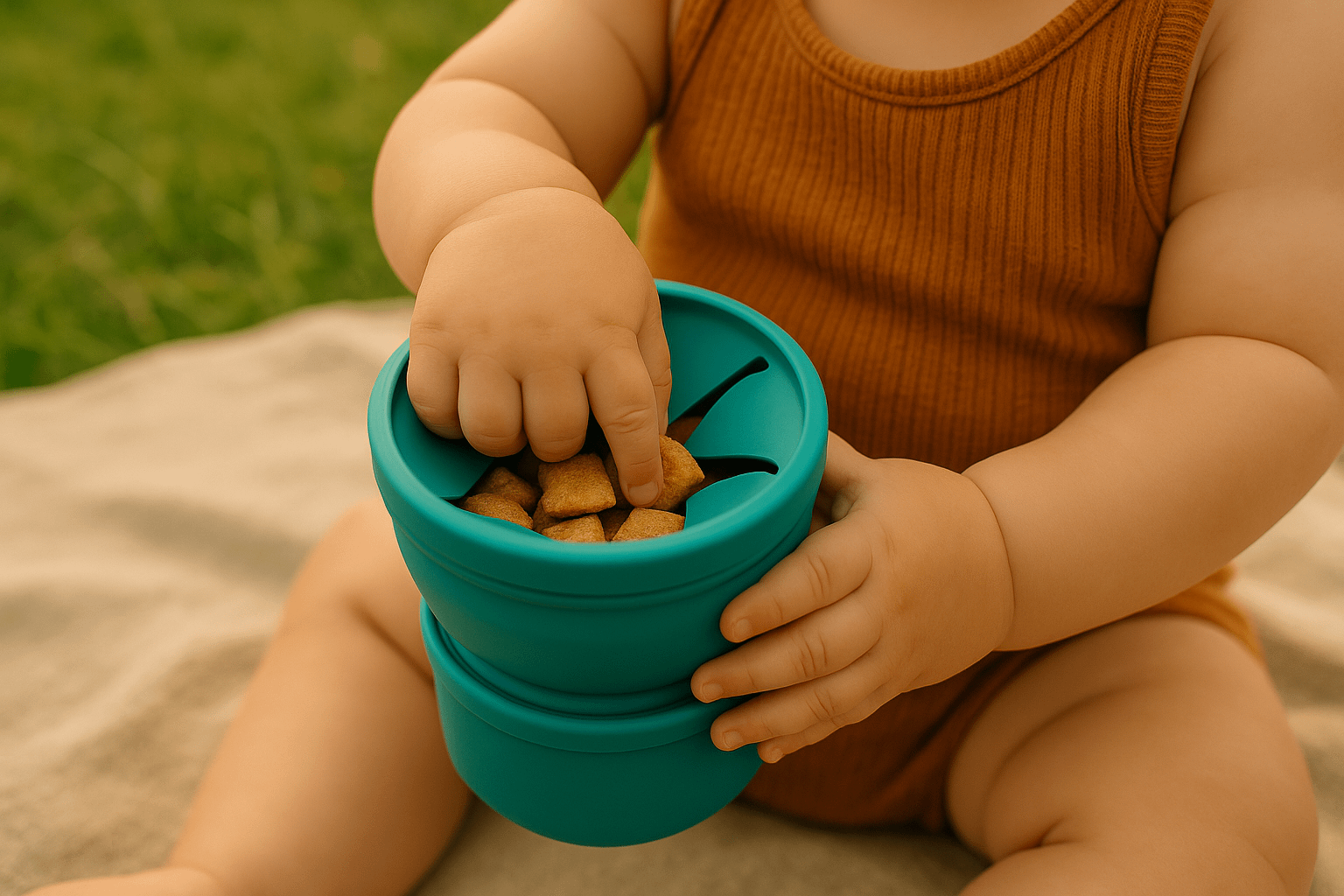
Safe Storage and Reheating of Baby Food
- Cool Bag Essentials: Always use an insulated cool bag with frozen ice blocks or frozen bottles of water to keep perishable baby food cold until mealtime.
- Reheating:
- Piping Hot: Any food, whether shop-bought or homemade, must be reheated until it’s steaming hot all the way through (aim for 71°C).
- Stir Well: If using a microwave, stir the food thoroughly after heating to eliminate hot spots.
- Cool Before Serving: Always allow the food to cool sufficiently and test the temperature on your wrist before giving it to your baby (ideally below 40°C).
- Reheat Once: Never reheat baby food more than once.
- Discard Leftovers: Any half-eaten portions should be thrown away. Do not save or reheat them.
- Food Flasks: For hot food on the go, a good quality food flask can keep pre-cooked food warm for several hours. Prepare the food at home, fill the flask with boiling water for 5 minutes to warm it, then discard the water and add your hot food. Use a food thermometer spoon to check the temperature before serving.
Navigating Specific Travel Scenarios
Each mode of transport and type of accommodation presents its own feeding considerations.
Air Travel
- Security Checks: You are generally allowed to carry sufficient baby milk (breast milk or formula), sterilised water, and baby food in your hand luggage to last the journey, even exceeding the 100ml liquid rule. Be prepared for these items to be screened and potentially tasted by security personnel.
- Feeding During Takeoff and Landing: Offer your baby a feed (breast or bottle) during ascent and descent. The sucking action helps to equalise the pressure in their ears, preventing discomfort.
- Warming Milk/Food: Most airline cabin crew will be happy to warm milk or food. Ask them in advance. Some parents bring a portable bottle warmer (check if battery-operated or if there’s a power source available).
- Be Prepared for Delays: Always pack more formula/food than you anticipate needing, in case of unexpected delays or cancellations.
- Cabin Pressure: Remember that bottles can sometimes leak due to cabin pressure changes. Keep them in a sealed bag.
Train and Coach Travel
- Space: Space can be limited. Consider using a compact travel high chair or booster seat if your baby is weaning, or simply feeding them on your lap.
- Stability: Trains can be bumpy. Be prepared for potential spills and keep plenty of muslins and wipes handy.
- Hot Water Access: Many train services have hot water available, but it’s always safer to bring your own in a vacuum flask if formula feeding with powder.
Car Travel
- Planned Stops: Integrate feeding breaks into your journey. It’s unsafe to feed a baby in a moving car, especially if you’re the driver.
- Cooler Box: A large cooler box with ice packs is ideal for longer car journeys to keep all perishable food and milk safe.
- Avoid Overfeeding Before Travel: If your baby is prone to travel sickness, avoid a full feed just before setting off. Small sips of milk or water are better.
- Dehydration Risk: In warm weather, ensure both you and your baby stay well-hydrated. Offer sips of cooled, boiled water to formula-fed babies over 6 months between feeds. Breastfed babies don’t usually need extra water.
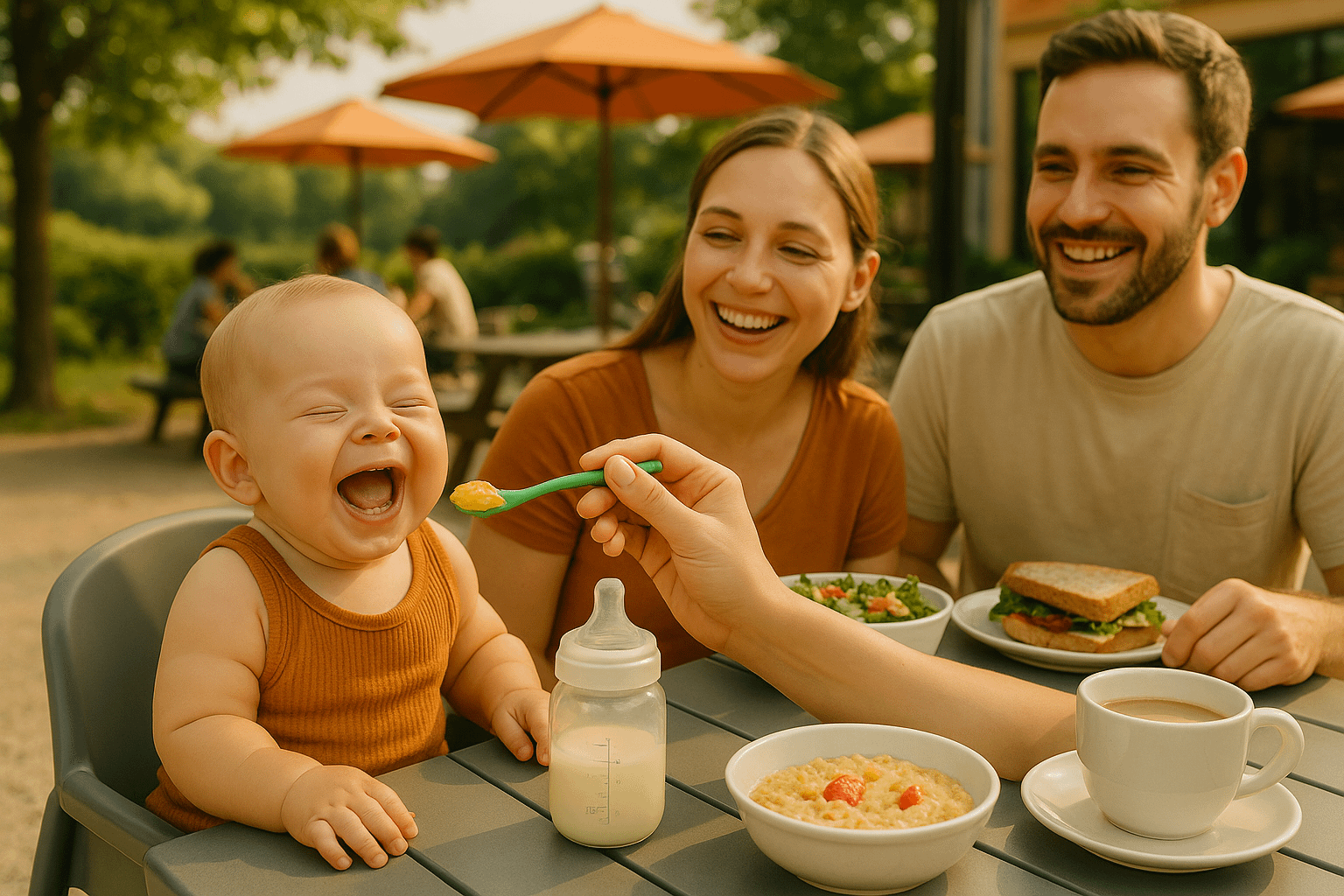
Hotels, Self-Catering & Camping
- Hotels:
- Kettle Access: Most hotel rooms have kettles, which are great for boiling water for formula.
- Mini-Fridge: Many rooms also have mini-fridges, perfect for storing expressed milk or pre-prepared baby food.
- Room Service/Restaurant: Check if the hotel restaurant can warm baby food or milk, or if they offer baby-friendly meal options.
- Self-Catering Accommodation: This is often the easiest option as you’ll have access to a full kitchen, allowing you to prepare and store food much as you would at home. Ensure the kitchen is clean and you have appropriate sterilising equipment.
- Camping:
- Cold Storage: A good quality cool box with ample ice packs or a portable fridge is essential.
- Sterilisation: Cold water sterilising tablets are ideal for camping, as they don’t require electricity.
- Water Source: Be absolutely sure of the safety of any water source before using it for feeding. Always boil water from unknown sources.
- Minimise Mess: Opt for ready-to-feed formula or dry finger foods to minimise mess and washing up.
Addressing Common Travel Feeding Challenges
Travel Sickness
- Symptoms: Young babies rarely get travel sick, but signs can include excessive dribbling, pallor, fussiness, and eventually sickness.
- Prevention:
- Avoid a full feed just before travel.
- Keep the car cool and well-ventilated.
- Avoid strong smells (food, perfume).
- Ensure your baby’s head is well-supported.
- Plan journeys during sleep times.
- If Sick: Offer small sips of breast milk, formula, or cooled boiled water to prevent dehydration. If vomiting is frequent, consult a pharmacist about oral rehydration solutions.
Food Allergies and Intolerances
Travelling with a baby who has a diagnosed food allergy requires extra vigilance and planning.
- Communicate Clearly: Inform airlines, hotels, and restaurants about your baby’s allergies in advance. Carry a clear, written explanation of the allergy, ideally in the local language if travelling abroad.
- Pack Familiar Foods: Bring a sufficient supply of safe, pre-packaged foods and snacks that you know your baby can eat without issue. Do not rely on finding suitable alternatives at your destination.
- Medication: Always carry any prescribed medication, such as antihistamines or adrenaline auto-injectors (e.g., EpiPen), in your hand luggage and ensure anyone travelling with you knows how to administer them and recognises the symptoms of an allergic reaction. Carry two auto-injectors if prescribed.
- Ingredient Checking: Be meticulous about checking food labels, even for items you think are safe, as ingredients can vary by country. When eating out, discuss your baby’s allergies thoroughly with staff.
- Cross-Contamination: Be aware of the risk of cross-contamination, especially in buffet settings or shared food preparation areas.
Maintaining Routine vs. Flexibility
Babies thrive on routine, and maintaining some semblance of their usual feeding schedule can help them feel more secure and settle into a new environment. However, travel often throws curveballs, so flexibility is equally vital.
- Plan Ahead: Try to schedule travel around usual feeding times where possible.
- Be Flexible: If a feed needs to be delayed, offer a small snack or a comfort feed until you can get to a suitable spot for a proper meal. Don’t stress if things don’t go exactly to plan; your baby will adapt.
- Observe Cues: Always respond to your baby’s hunger cues, even if they’re not exactly “on schedule.”
Essential Portable Feeding Equipment Checklist
Having the right gear can make all the difference.
- For all feeding methods:
- Bibs (disposable or reusable)
- Muslin cloths
- Wipes (for hands and surfaces)
- Small plastic bags (for rubbish or soiled items)
- Insulated cool bag with ice packs
- Small travel first aid kit (including infant paracetamol/ibuprofen, rehydration sachets)
- For Breastfeeding:
- Nursing cover (optional)
- Breast pads
- Nipple cream
- Manual or portable electric breast pump (if expressing)
- Milk storage bags/containers
- For Formula Feeding:
- Pre-measured formula pots
- Vacuum flask (for hot water)
- Sterilised bottles with teats and caps
- Ready-to-feed formula cartons
- Travel steriliser (cold water tablets or microwave bags)
- Bottle brush and small washing-up liquid (if washing bottles)
- For Weaning:
- Baby food pouches/jars
- Spoons (travel-friendly, silicone-tipped)
- Portable bowl or plate
- Snack pots/cups
- Food flask (for hot food)
- Baby-friendly cutlery
- Thermometer spoon (optional, for checking food temperature)
- Travel high chair or booster seat (some are very compact)
Disclosure: As an Affiliate, I earn from qualifying purchases. This means that if you click on a link and make a purchase, I may receive a small commission at no additional cost to you.
A Final Word of Encouragement
Travelling with a baby, especially for the first time, can feel daunting, but with careful planning and a good understanding of safe feeding practices, it can be a truly rewarding experience. Remember, you know your baby best. Trust your instincts, be prepared, and most importantly, enjoy the precious moments of exploring the world with your little one. Happy travels and happy feeding!
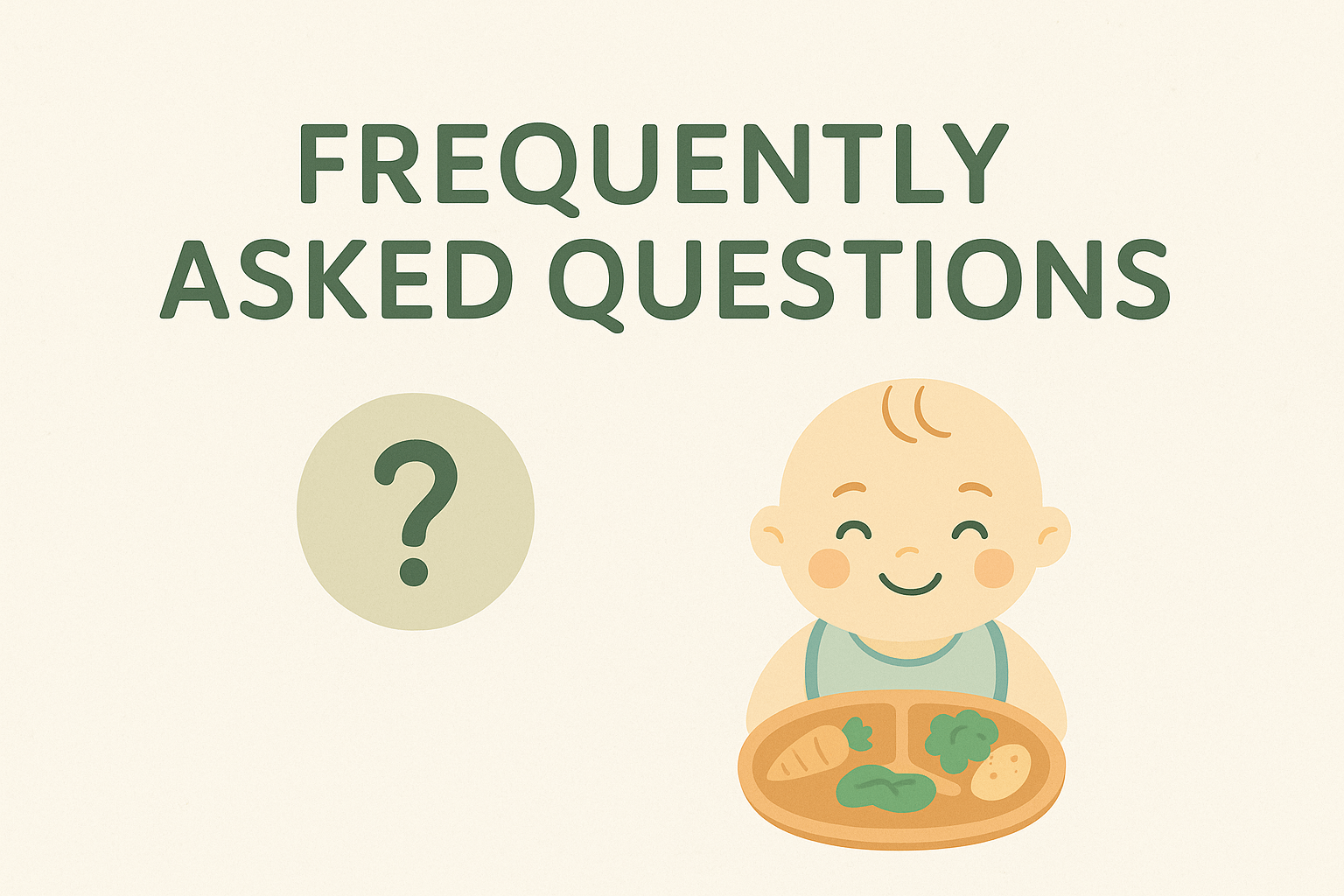
Frequently Asked Questions (FAQs) about Safe Travel Feeding
Can I carry expressed breast milk or formula in my hand luggage on a flight?
Yes, you are generally allowed to carry sufficient baby milk (breast milk or formula) and sterilised water in your hand luggage, even exceeding the 100ml liquid rule. Be prepared for these items to be screened by security.
What type of bottled water is safe to use for formula preparation when travelling abroad?
If using bottled water, choose still (not sparkling) water. Crucially, check the label to ensure the sodium (Na) level is no higher than 200 mg per litre and the sulphate (SO or SO4) level is less than 250 mg per litre. It must still be boiled and cooled to above 70°C before mixing with the formula.
How should I store prepared formula when travelling?
While making feeds fresh is always best, if you pre-prepare, cool it rapidly and transport it in a cool bag with an ice pack. Use within 4 hours in a cool bag with ice, or within 24 hours if kept continuously in a fridge. At room temperature, use within 2 hours.
What are the most convenient baby food options for weaning on the go?
Shop-bought pouches and jars are incredibly convenient as they are pre-sterilised and shelf-stable. For older babies, travel-friendly finger foods like rice cakes, plain biscuits, and soft fruit are excellent choices.
Is it safe to reheat baby food more than once while travelling?
No, you should never reheat baby food more than once. Any half-eaten portions should also be thrown away and not saved or reheated.
How can I help my baby with ear pressure during flights?
Offering your baby a feed (breast or bottle) during takeoff and landing can help. The sucking action helps to equalise the pressure in their ears, preventing discomfort.
What should I do if my baby has a food allergy and we are travelling?
Inform airlines, hotels, and restaurants about your baby’s allergies in advance, and carry a written explanation, ideally in the local language if abroad. Pack a sufficient supply of safe, familiar foods and always carry any prescribed medication (e.g., EpiPen) in your hand luggage.
Further Reading
- Navigating Food Allergies and Intolerances
- Understanding UK Food Labelling Regulations
- Understanding Common Food Allergens and Their Impact
- Avoiding Choking Hazards During Feeding
- UK Baby Product Safety Standards 2025: Your Complete Parent’s Guide
- Common Baby Illnesses and When to Call a Doctor
- Baby Food Allergies: Symptoms and Prevention
- Signs Your Baby is Getting Enough Milk
References Section:
- NHS. (2025). Bottle feeding advice. Retrieved from https://www.nhs.uk/baby/breastfeeding-and-bottle-feeding/bottle-feeding/advice/. (Note: Specific 2025 link not yet live, referencing current best practice based on available 2025 guidance previews).
- NHS. (2025). Formula milk: Retrieved from https://www.nhs.uk/baby/breastfeeding-and-bottle-feeding/bottle-feeding/types-of-formula/ (Note: Specific 2025 link not yet live, referencing current best practice based on available 2025 guidance previews).
- NHS. (2025). Storing and reheating food (Start for Life). Retrieved from https://www.nhs.uk/start-for-life/baby/weaning/safe-weaning/storing-and-reheating-food/ (Note: Specific 2025 link not yet live, referencing current best practice based on available 2025 guidance previews).
- National Childbirth Trust (NCT). (2025). What if I need to formula feed my baby away from home? Retrieved from https://www.nct.org.uk/information/baby-toddler/feeding-your-baby-or-toddler/what-if-i-need-formula-feed-my-baby-away-home. (Note: Specific 2025 link not yet live, referencing current best practice based on available 2025 guidance previews).
- The Equality Act 2010. (Legislation protecting breastfeeding in public in the UK).
- Childcare Studies. (2025). Supporting Healthy Eating in the Early Years: What the 2025 Guidance Means for You. Retrieved from https://childcarestudies.co.uk/blog/healthy-eating-2025-guidance/
- Kendamil. (2025). Tips for feeding baby while travelling. Retrieved from https://kendamil.com/blogs/blog/tips-for-feeding-baby-while-travelling
- Superdrug Health Clinic. (2025). Breastfeeding And Bottlefeeding – Travel. Retrieved from https://healthclinics.superdrug.com/breastfeeding-and-bottlefeeding-travel/
- BabyCentre UK. (2025). How can I feed my baby while I’m travelling? Retrieved from https://www.babycentre.co.uk/x542030/how-can-i-feed-my-baby-while-im-travelling
- The Safer Tourism Foundation. (2025). Travelling with a food allergy. Retrieved from https://www.safertourism.org.uk/traveller-type/travelling-with-a-food-allergy
- Sussex Community NHS Foundation Trust. (2025). Feeding when travelling. Retrieved from https://www.sussexcommunity.nhs.uk/patients-and-visitors/resources/patient-resources/feeding-when-travelling
